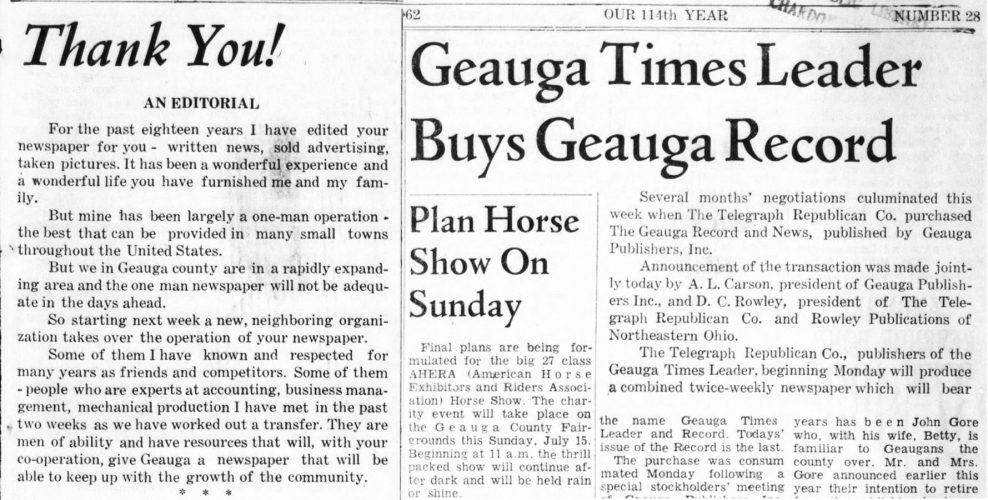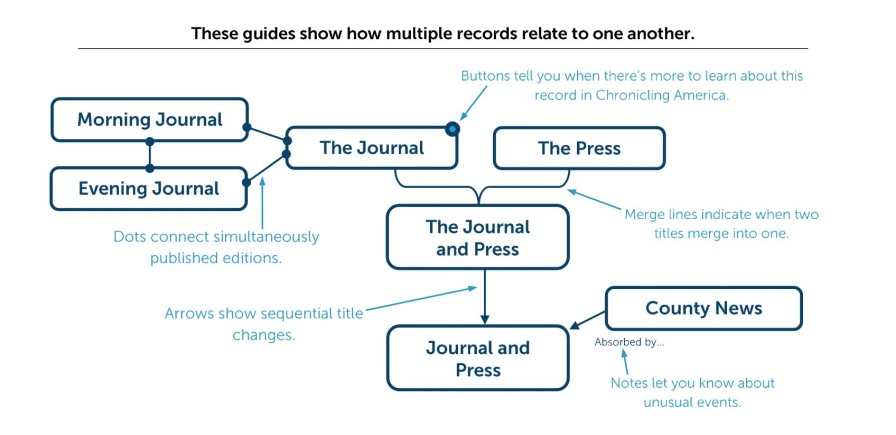Tracing Title Changes in Ohio’s Historic Newspapers

Part of my job as the project coordinator for Ohio’s contribution to the National Digital Newspaper Program involves writing descriptions of a newspaper’s content and historical context to aid researchers. Some newspapers are simple to research: they started publishing news, and they continued to publish news indefinitely, or until they ran out of money. Some newspapers are more complicated, and have interesting origins, or bitter local rivalries. Here are two examples.
Robert C. Barton writes in The 1976 History of Allen County, Ohio, that “in 1875, a 19-year-old Nelson Wilbur Cunningham moved from Lima to Bluffton, Ohio, and operating on a shoestring and a lot of enthusiasm, founded the Bluffton News. One hundred years and six owners later, the News celebrated its centennial in 1975.” Despite the long run and several changes of hands, there exists a single catalog record for the Bluffton News, which happens to still publish today. Simple newspaper histories like that of the Bluffton News make for straightforward research.


Meanwhile, in 1962 in Chardon, Ohio, the long-running Geauga Record was busy being sold to the Geauga Times-Leader, which was based in nearby Burton, Ohio. It was an apparently amicable transfer, and the two titles merged to become the biweekly Geauga Times Leader and Record, operating out of Burton. Less than a year later, the Burton office burned down and the entire operation moved back to the old Chardon location while dropping Record from the name. The relocated newspaper assumed a familiar title, Geauga Times Leader (note the lack of a dash between Times and Leader).
Between July 1962 and December 1963, this newspaper earned four separate catalog records for its troubles, two of which differ only by a single, stylistic dash. Furthermore, tracing back through the newspaper’s entire history reveals that it had four starting points as early as 1849, and funnels down into one currently publishing newspaper, with 21 records from start to finish. How do we make sense of such a complicated history?
My early methods involved a whiteboard and several sticky notes. I wanted to share these connections, which aren’t easily conveyed via text. So, I asked my colleagues what they’d like to see in this resource, and devised a system of relating the records together like a flow chart. If you’re interested in adapting it for your own research aids, here’s a glance at the process.
- Check the catalog records! I used the MARC records found on the Chronicling America website because that’s where my work centers. The 780, 785, 775, and 787 fields denote the relationships a title has with its predecessors and successors.
- Find historical context! Reading the newspaper chapter in a ready reference county history will probably fill out full names and dates that might be missing from a record. You may even get some insight on how popular the paper was, and if there were any local rivalries between it and a competitor.
- When in doubt, dive in to the primary source! If you have access to the first or last issue of the newspaper, there may be an editorial discussing the owner’s goals for the publication, or plans to discontinue it. The Geauga Record’s final issue posted two front-page articles covering the merger (seen at right), and the differences in tone between the retiring editor and the new owners were fascinating to read. It’s always prudent to see how the paper self-described

Finally, I collected the relevant information (title, reference numbers, publication dates and frequency), and arranged them visually. Have you found a surprising connection between materials? How would you link them together so others can discover those stories, too?
Title change diagrams can be found for the current round of NDNP newspaper selections on Ohio’s NDNP project website.
Thank you to Jen Cabiya, Project Coordinator for the National Digital Newspaper Program in Ohio, for this week’s post!
Ohio Memory is celebrating 20 years! Visit our blog all year long to learn more about our program, partners and collections.



Leave a Reply
You must be logged in to post a comment.